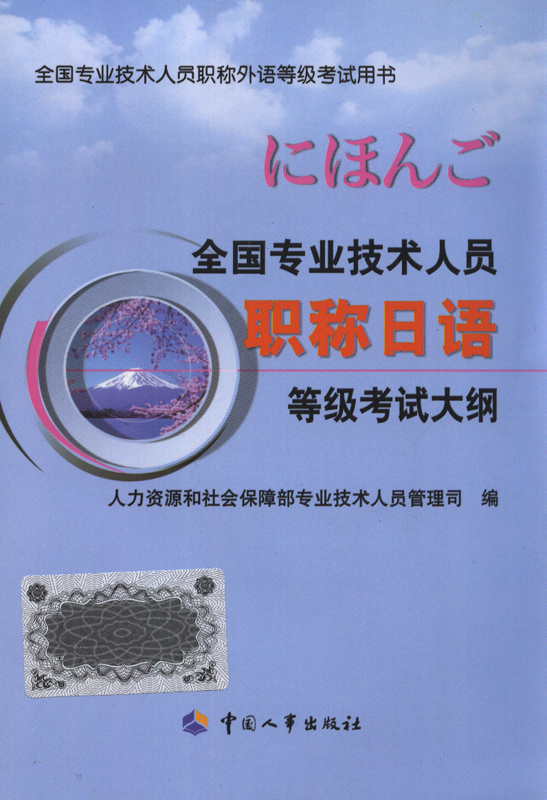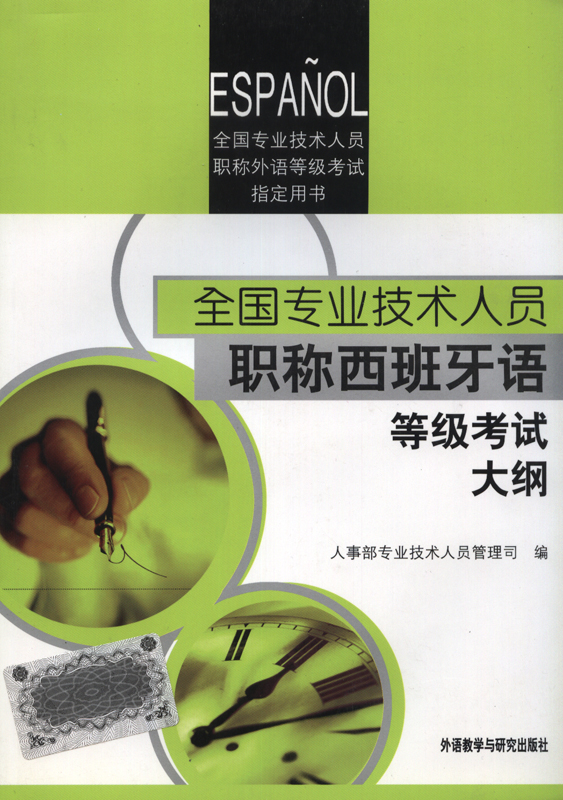第1部分:词汇选项(第1~15题,每题1分,共15分)
下面每个句子中均有1个词或短语划有底横线,请为每处划线部分确定1个意义最为接近选项。
1 I am not certain whether he will come.
A sure
B determined
C sorry
D glad
2 she seemed to have detected some anger in his voice.
A heard
B noticed
C realized
D got
3 Please do not hesitate to call me if I can be of further assistance.
A see
B contact
C help
D touch
4 In short, I am going to live there myself.
A In other words
B That is to say
C To be frank
D In a word
5 He has trouble understanding that other people judge him by his social skills and conduct.
A behavior
B style
C mode
D attitude
6 I had some difficulty in carrying out the plan.
A making
B keeping
C implementing
D changing
7 Mr. Johnson evidently regarded this as a great joke.
A readily
B casually
C simply
D obviously
8 We all think that Mary's husband is a very boring person.
A shy
B stupid
C selfish
D dull
9 The workers in that factory manufacture furniture.
A promote
B paint
C polish
D produce
10 they only have a limited amount of time to get their points across.
A large
B total
C similar
D small
11 The high-speed trains can have a major impact on travel preferences.
A influence
B force
C surprise
D power
12 can you follow the plot?
A change
B investigate
C understand
D write
13 Even in a highly modernized country, Manual work is a still needed.
A mental
B physical
C natural
D hard
14 In the latter case the outcome can be serious indeed.
A judgement
B result
C decision
D event
15 Norman Blamey is an artist of deep convictions.
A beliefs
B statements
C suggestions
D claims
第2部分:阅读判断(第1~7题,每题1分,共7分)
下面的短文后列出了7个句子,请根据短文的内容对每个句子做出判断:如果该句提供的是正确信息,请选择A;如果该句提供的是错误信息,请选择B;如果该句的信息文中没有提及,请选择C。
Dyslexia
As many as 20% of all children in the United States suffer from some form of the learning disorder2 called dyslexia.
Experts on dyslexia say that the problem is not a disease. They say that persons with dyslexia use information in a different way .One of the world 's great thinkers and scientists. Albert Einstein was dyslexic. Einstein said that he never thought in words the way that most people do .He said that he thought in pictures instead .The American inventor Thomas Edison was also dyslexic. Dyslexia first was recognized in Europe and the United States more than 80 years ago. Many years passed before doctors discovered that persons with the disorder were not mentally slow or disabled .The doctors found that the brains of persons with dyslexia are different. In most people, the left side of the brain3-----the part that controls language is larger than the right side. In persons with dyslexia, the right side of the brain is bigger. Doctors are not sure what causes this difference. However, research has shown that dyslexia is more common in males than in females, and it is found more often in persons who are left handed4. No one knows the cause of dyslexia, but some scientists believe that it may result from chemical changes in a baby's body long before it is born. They are trying to find ways to teach persons with dyslexia. Dyslexic persons think differently and need special kinds of teaching help. After they have solved their problems with language, they often show themselves to be especially intelligent or creative.
1. One out of five American children suffers from dyslexia.
A. Right B. Wrong C. Not mentioned
2.Many great thinkers and scientists in the world are dyslexic.
A. Right B. Wrong C. Not mentioned
3.The first cases of dyslexia in Europe were discovered less than a century ago.
A. Right B. Wrong C. Not mentioned
4.The left side of the brain in a dyslexic person is bigger than the right side.
A. Right B. Wrong C. Not mentioned
5.Generally speaking, dyslexia is more common in left-handed males than in right-handed females.
A. Right B. Wrong C. Not mentioned
6.It is believed that dyslexia is related to the bad habits of a baby's mother.
A. Right B. Wrong C. Not mentioned
7.Dyslexic people often turn out to be intelligent or creative one they have learned to handle language properly.
A. Right B. Wrong C. Not mentioned
第3部分:概括大意与完成句子(第23~30题,每题1分,共8分)
阅读下面这篇短文,短文后有2项测试任务:(1)第23~26题要求从所给的6个选项中为第2~5段每段选择1个正确的小标题;(2)第27~30题要求从所给的6个选项中选择4个正确选项,分别完成每个句子。请将答案涂在答题卡相应的位置上。
1 Some people seem to have a knack for learning languages. They can pick up new vocabulary, master rules or grammar, and learn to write in the new language more quickly than others. They do not seem to be any more intelligent than others, so what makes language learning so much easier for them? Perhaps if we take a close look at these successful language learners, we may discover a few of the techniques which make language learning easier for them.
2 First of all, successful language learners are independent learners. They do not depend on the book or the teacher, they discover their own way to learn the language. Instead of waiting for the teacher to explain, they try to find the patterns and the rules for themselves. They are good guessers who look for clues and form their own conclusions. When they guess wrong, they guess again. They try to learn from mistakes.
3 Successful language learning is active learning. Therefore, successful learners do not wait for a chance to use the language; they look for such a chance. They find people who speak the language and they ask these people to correct them when they make a mistake. They will try anything to communicate. They are not afraid to repeat what they hear or to say strange things; they are willing to make mistakes and try again. When communication is difficult, they can accept information that is inexact or incomplete. It is more important for them to learn to think in the language than to know the meaning of every word.
4 Finally, successful language learners are learners with a purpose. They want to learn the language because they are interested in the language and the people who speak it. It is necessary for them to learn the language in order to communicate with these people and to learn from them. They find it easy to practice using the language regularly because they want to learn with it.
5 What kind of language learner are you? If you are a successful language learner, you have probably been learning independently, actively, and purposefully. On the other hand, if your language learning has been less than successful, you might as well try some of the techniques outlined above.
23 Paragraph 1…….. ( )
24 Paragraph 2…….. ( )
25 Paragraph 3…….. ( )
26 Paragraph 4…….. ( )
A Ways to Learn a Language Successfully
B Learning a Language Purposefully
C Learning a Language Actively
D Learning a Language Independently
E Learning from Mistakes
F Learning to Think in the Target Language
27 Successful language learners derive conclusions …….. ( )
28 Independent language learners rely on themselves …….. ( )
29 Active language learners seize every opportunity …….. ( )
30 The author wrote this text …….. ( )
A to discover sentence patterns and grammatical rules
B to expand vocabulary
C to use the target language
D to encourage unsuccessful language learners to learn independently, actively and purposefully
E from clues
F to say strange things
第4部分:阅读理解
短文后有5道题,每道题后面都有4个选项。请仔细阅读短文并根据短文回答其后面的问题,从4个选项中选择1个最佳答案涂在答题卡相应的位置上。
Chewing Gum
The practice of chewing gum (口香糖) has been with us for more than a century. Millions of people all over the world chew billions of pieces of gum every year.
Chewing gum became popular in the United States mainly because of the work of one man, William Wrigley, who for many years was head of the Wrigley Company. Earlier, Thomas Adams first began to experiment with chewing gum in about the year 1870. It was he who first made gum softer and pleasant to chew. But it was not until Wrigley entered the business in about 1890 that people everywhere began to learn about chewing gum and to use it widely.
Wrigley liked to do things in a big way. In his first year, he borrowed money and spent more than a million dollars on advertising (做广告). For years, there was a large Wrigley’s advertisement in every streetcar(有轨电车) in the United States. People complained that they could not go anywhere without seeing Wrigley’s name. Wrigley even sent, free of charge, pieces of gum to every person in the telephone book of every city and town in the United States. Finally, he began to advertise that it was good for the health to chew gum and that it helped to keep the teeth clean.
He used to send free gum to every child in the United States on his second birthday. He employed young women who, in beautiful dresses, would go from city to city in groups of four or five, stand on street corners, and give free chewing gum to every person who passed by. In this way, each woman gave away about five thousand pieces of Wrigley’s gum every day. As a result of this continuous advertising, people in the United States naturally began to buy more and more chewing gum.
31 Who first started to experiment with chewing gum?
A William Wrigley.
B Thomas Adams.
C Children.
D Women.
32 William Wrigley spent more than amillion dollars in advertising his chewing gum because
A he was a millioaire.
B he liked to do things in a big way.
C he hoped to improve his health.
D he wanted to head the company.
33 Which of the following is NOT true of Wrigley’s advertising?
A He used his name to advertise chewing gum in every streetcar in the US.
B He sent free gum to every person in the telephone book of every city in the US.
C He sent free gum to every pretty woman
D He sent free gum to every child in the US on his second birthday.
34 In the last paragraph, the phrase “give away” is closest in meaning to
A “eat up”
B “get ready”
C “destroy”
D “give something to someone free of charge”
35 According to the passage, people in the US began to chew more and more gum mainly because of
A Wrigley’s continuous advertising.
B its strange taste.
C their bad teeth.
D its pleasant flavour.
第5部分:补全短文(第46~50题,每题2分,共10分)
阅读下面的短文,文章中有5处空白,文章后面有6组文字,请根据文章的内容选择5组文字,将其分别放回文章原有位置,以恢复文章原貌。请将答案涂在答题卡相应的位置上。
Ludwig van Beethoven
Ludwig van Beethoven, a major composer of the nineteenth century, overcame many personal problems to achieve artistic greatness.
Born in Bonn, Germany, in 1770, he first studied music with the court organist, Gilles van der Eeden. (46) When his mother died, Beethoven, then a young man, was named guardian of his two younger brothers. Appointed deputy court organist to Christian Gottlob Neefe at a surprisingly early age in 1782, Beethoven also played the harpsichord and the viola. (47)
Beethoven remained unmarried. Because of irregular payments from his publishers and erratic support from his patrons, he was troubled by financial worries throughout his adult life. (48)
In spite of this handicap, however, he continued to write music. He completed mature masterpieces of great musical depth: three piano sonatas, four string quartets, the Missa Solemnis, and the 9th Symphony. (49) His life was marked by a passionate dedication to independence.
Noting that Beethoven often flew into fits of rage, Goethe once said of him, “I am astonished by his talent, but he is unfortunately an altogether untamed personality.” (50)
A Today his music is still being played all over the world.
B He died in 1827.
C In 1792 he was sent to Vienna by his patron, Count Ferdinand Waldstein, to study music under Haydn.
D His father was excessively strict and given to heavy drinking.
E Although Beethoven’s personality may have been untamed, his music shows great discipline and control, and this is how we remember him best.
F Continually plagued by ill health, he developed an ear infection which led to his tragic
第6部分:完形填空(第51~65题,每题1分,共15分)
阅读下面的短文,文中有15处空白,每处空白给出4个选项,请根据短文的内容从4个选项中选择1个最佳答案,涂在答题卡相应的位置上。
The Recreative Function of Greens pace Facilities
Greenspace facilities are contributing to an important extent to the quality of the urban environment. Fortunately it is
(51) longer necessary that every lecture or every book about this subject has to start with the proof of this idea. At present it is (52) accepted, although more as a self-evident statement (53) on the basis of a closely-reasoned scientific proof. The recognition of the importance of greens paces in the urban environment is the (54) step on the right way; this does not (55), however, that sufficient details are known about the functions of greens pace in towns and about the way in which the inhabitants(居民) are using these spaces. As to this rather complex subject I shall, within the (56) of this lecture, enter into one aspect only, namely the recreative (供消遣的) function of greens pace facilities.职称英语教材
The theoretical separation of (57), working, traffic and recreation which for many years has been used in town-and-country planning, has in my (58) resulted in disproportionate attention for forms of recreation far from home, whereas there was relatively (59) attention for improvement of recreative possibilities in the direct neighbourhood of the home. We have (60) to the conlusion that this is not right, because an important part of the time which we do not pass in sleeping or working, is used for (61) at and around home. So it is obvious that recreation in the open (62) has to begin at the street-door of the house. The urban environment has to offer as many recreation activities as (63), and the design of these has to be such that more obligatory(必须做的) activities can also have a recreative aspect.
The very best standard of living is nothing if it is not possible to (64) a pleasant walk in the district, if the children cannot be allowed to play in the streets because the risks of traffic are too great, if during shopping you can nowhere (65) a spot for enjoying for a moment the nice weather, in short if you only feel yourself at home after the street-door of your house is closed after you.
51 A not B no C any D some
52 A generally B scarcely C rarely D seldom
53 A no B less C than D then
54 A one B second C third D first
55 A produce B utter C speak D mean
56 A district B region C area D scope
57 A lives B life C living D live
58 A lecture B opinion C talk D speech
59 A little B much C lot of D many
60 A reach B come C arrive D derive
61 A walking B running C activities D eating
62 A sky B house C home D air
63 A might B probable C could D possible
64 A make B take C bring D go
65 A look B seek C look for D find
















